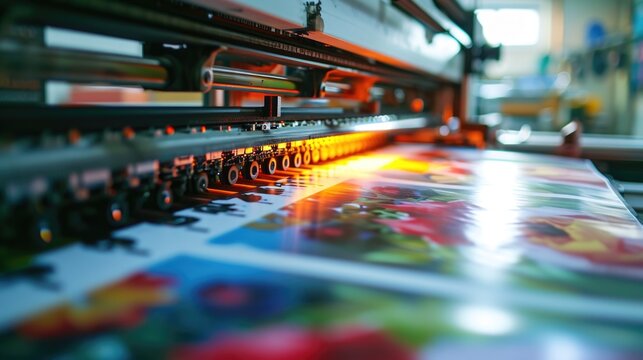Are you a business professional seeking to enhance your product packaging with well-crafted ingredient labels? You’re in the right place! Understanding how to print ingredient labels is crucial for both compliance and customer satisfaction. We’ll explore the technology and techniques to get you delighted with your labeling process.

Understanding the Importance of Ingredient Labels
Before diving into the printing process, it’s imperative to appreciate the significance of ingredient labels. Labels not only inform consumers but also ensure that your products are compliant with industry standards. Clear and accurate labeling is essential for consumer trust and legal responsibility.
Choosing the Right Printing Technology
When deciding how to print ingredient labels, selecting the appropriate technology plays a tremendous role. Depending on your requirements, you may opt for thermal printing, laser printing, or inkjet printing. Each method offers unique benefits tailored to different needs.
Thermal Printing
Thermal printers are excellent for high-volume tasks and produce labels swiftly. They are widely used in the food industry. You can find a helpful guide on [making stickers with thermal printers](https://www.compandsave.com/how-to-make-stickers-with-thermal-printer-guide?srsltid=AfmBOoqbLqOUobJCozlGdA0OcGkEHMrpWskfFK2PVwDkKP3fns_0jK2I) with excellent precision.
Laser Printing
Best suited for businesses requiring sharp and vibrant labels, laser printing provides high resolution and durability. Ensure that materials and toners are compatible with your needs.
Inkjet Printing
For businesses seeking versatility, inkjet printers offer flexibility in terms of material usage. They are perfect for small to medium batches of labels with multiple color requirements.
Designing Your Ingredient Labels
Designing ingredient labels involves creativity and compliance. Labels should be straightforward and attractive, using readable fonts and simple layouts. Prioritize the company’s logo and brand colors to maintain consistency.
Digital Design Tools
Utilize digital tools like Canva or Adobe Illustrator to create custom designs. For a more streamlined process, check out [designing business cards with Canva](https://fullcolorprintingfirm.com/how-to-print-business-cards-from-canva/) for inspiration.
Printing Process: Step-by-Step
This section provides step-by-step instructions on how to print ingredient labels efficiently:
Selecting Label Material
Choosing the correct label material is vital. Common types include paper, polyester, and vinyl. Consider the environment where your product will be stored. Durable materials like polyester or vinyl are suitable for harsh environments.
Setting Up the Printer
Configuration is key. Ensure your printer settings align with the media type. Refer to your printers manual or the [Xerox user guide](https://www.support.xerox.com/en-us/article/KB0136161) for a nofollow guide on setting up printers.
Quality Assurance
Once printed, verify the quality and accuracy of each label. Consistency across batches is vital for consumer recognition.
Cost-Effective Options
Many small businesses are inclined towards finding affordable label printing solutions. Learn about the [print on demand business](https://fullcolorprintingfirm.com/what-is-a-print-on-demand-business/) for scalable and cost-effective label production.
Staying Updated with Printing Trends
Keeping informed about the emerging trends and technologies in label printing can help you stay ahead of competitors. The shift towards eco-friendly materials is a prime innovation area.
Troubleshooting Common Issues
Encounter common issues with ingredient label printing? Address problems such as smudging, fading, and alignment. Ensure your printer is regularly maintained and stocked with quality materials.
Case Studies: Successful Ingredient Label Printing
Discover various business case studies that successfully integrated efficient label printing solutions, setting benchmarks for industry standards.
Small Business Success Story
A local bakery enhanced their product appeal by investing in high-quality thermal printers. It boosted their sales by 20% after updating their label designs.
Manufacturing Leader Example
A leading cosmetics brand restructured their label printing line, adopting eco-friendly substrates, resulting in a 15% cost-saving and meeting environmental goals.
Is It Here for Your Business?
Label printing is not just a requirement; it’s an opportunity to market your product and build brand reputation. Are you ready to implement terrific label printing solutions into your product line?
Conclusion
Learning how to print ingredient labels is crucial for any business professional looking to enhance product presentation and compliance. With technology advancements and creative design, you can print labels that captivate and inform your audience effectively.

FAQ Section
Why are ingredient labels necessary?
Ingredient labels ensure consumer safety and product compliance, offering transparency and building trust with customers.
What is the best printing technology for labels?
The best technology depends on label requirements such as durability and volume. Thermal printers are often preferred for high-volume tasks.
How do I design appealing labels?
Utilize tools like Canva for vibrant, brand-consistent designs that align with industry standards. Keep it simple and informative.







